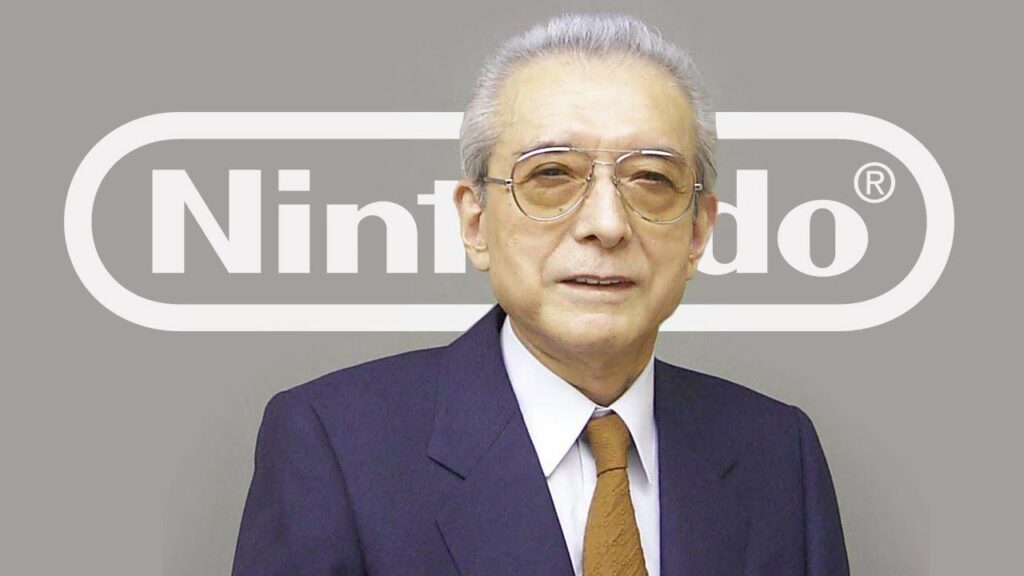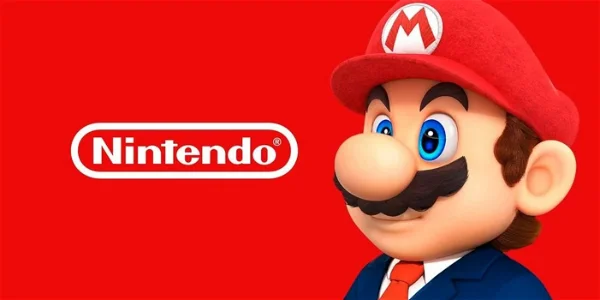Nintendo, a name synonymous with the colorful world of video games, has carved an indelible mark on the landscape of interactive entertainment. This venerable Japanese company, founded in the late 19th century, embarked on a remarkable journey that would eventually make it an icon in the gaming industry. Nintendo’s story is not just one of success; it’s a tale of innovation, resilience, and a relentless pursuit of fun.
The roots of Nintendo trace back to a modest playing card company founded by Fusajiro Yamauchi in Kyoto, Japan, in 1889. Little did anyone know that this humble venture would evolve into a global powerhouse, shaping the way generations would play and experience video games.

Nintendo is a Japanese multinational consumer electronics and video game company headquartered in Kyoto, Japan. The company was founded in 1889 as a playing card manufacturer, and it has since become one of the most successful video game companies in the world.
Nintendo’s most popular products include the Nintendo Switch, the Wii, and the Game Boy. The company has also created many popular video game franchises, such as Mario, Zelda, and Pokémon.
Nintendo is known for its innovative products and its commitment to quality. The company has been praised for its creativity and its ability to appeal to a wide range of gamers.
Here are some of the reasons why Nintendo is so successful:
- Innovation: Nintendo is always looking for new ways to innovate and create new experiences for gamers. The company’s products are often groundbreaking and set new standards for the industry.
- Quality: Nintendo products are known for their high quality and durability. The company has a reputation for making products that will last and provide hours of enjoyment.
- Variety: Nintendo offers a wide variety of products to appeal to a wide range of gamers. The company has something for everyone, from casual gamers to hardcore enthusiasts.
- Family-friendly: Nintendo is known for its family-friendly games. The company’s products are often appropriate for all ages, and they can be enjoyed by people of all skill levels.
- IP: Nintendo owns some of the most popular video game franchises in the world, such as Mario, Zelda, and Pokémon. These franchises have a loyal following of fans, which helps to drive sales of Nintendo products.
Success Story of Nintendo: A Rollercoaster Ride Through the Video Game Industry
Throughout a significant portion of the 20th century, Nintendo held an undisputed dominion over Japan’s playing card market, foreshadowing its eventual reign over the video game industry decades later. Fast forward to the 1990s, nearly a century after its inception, and Nintendo had firmly established its supremacy in the video game sector, commanding an estimated market share exceeding 80%. This Japanese gaming titan had not only attained unparalleled success on its home turf but had also achieved unprecedented acclaim in the United States and across the globe.
Now, let’s embark on a deep dive into the ascent and descent of Nintendo’s dominion in the dynamic realm of the video game market.
Nintendo’s Origins
In the early days of video games, Atari often takes the spotlight, but the industry’s roots stretch back to the 1960s when the first game prototypes emerged from labs. However, Atari’s introduction of Pong in 1972 marked a turning point, catapulting the industry into the mainstream.
Nintendo’s remarkable journey began during a challenging period for video games in the early 1980s, marked by Atari’s decline. Seizing an opportunity, Nintendo released “Beam Gun” (later known as Zapper) in 1984, an electronic toy game compatible with arcade games. This innovative move played a significant role in Nintendo’s rise to dominance. The Zapper, with over 29 million copies sold, became a beloved gaming accessory.
During the 1970s, arcade gaming gained worldwide popularity, drawing players and businesses into the burgeoning market. However, imitation began diluting the scene. In response, Atari launched a home console version of Pong in 1975 and introduced the Atari 2600 in 1977, the first console to surpass a million unit sales.
Atari’s missteps began when it licensed costly ports of Pac-Man and E.T. the Extra-Terrestrial, rushing them to market in subpar conditions. This decision cost millions and damaged Atari’s reputation.
In 1982, arcade games raked in a staggering $27 billion, while console sales lagged at around $14 billion. The rush to grab a piece of the action led to a glut of video game producers and subpar games, resulting in a decline. Arcade game sales plummeted by 66%, and console game sales nosedived by 93% between 1982 and 1985. Atari suffered a staggering $536 million loss in 1983.
By 1987, Nintendo emerged as a dominant force, capturing 65% of the video game hardware market, while Atari’s market share plummeted from 80% to 24%.
Nintendo recognized an opening and introduced the Nintendo Entertainment System (NES) in the United States in 1985. It became an instant hit, and by 1989, Nintendo held a staggering 95% share of the console market.
A key factor in the NES’s success was the release of “Super Mario Bros.” This game, played on the Nintendo NES, reshaped the industry and sold 62 million units worldwide, solidifying the NES’s status as the longest-lasting video gaming platform in history.
Nintendo’s ingenious marketing and distribution strategies, especially targeting children, contributed to its success. They rebranded as a toy company, even including a toy called R.O.B. with the NES gaming consoles to enhance the gaming experience.
The Console Wars
Many gamers grew up with the beloved Nintendo Entertainment System (NES), known for iconic characters like Mario. However, Nintendo’s reign was destined to face challenges from fresh competitors, evolving technology, and shifting consumer tastes.
In 1989, a new player entered the scene. SEGA, a different console manufacturer, introduced the “Genesis” to the US market on August 14th. This powerful and exciting gaming machine quickly gained popularity, establishing SEGA as a formidable adversary to Nintendo, marking the onset of the console wars.
SEGA marketed the Genesis as a more mature and sophisticated console compared to the NES, targeting an older demographic. Their aggressive marketing campaigns, including the memorable “Genesis does what Nintendon’t” slogan, aimed to chip away at Nintendo’s dominance.
While competitors like SEGA emerged, Nintendo responded with innovation and strategic decisions. In 1991, they unveiled the Super Nintendo Entertainment System (SNES), a technologically advanced console surpassing the NES. The SNES boasted enhanced graphics, sound, processing power, and a wider game library.
Nintendo also secured exclusive deals with third-party developers to create games solely for the SNES, setting it apart from rivals. Additionally, Nintendo ventured into the handheld gaming market with the Game Boy in 1989, becoming a best-seller and mitigating the impact of losing market dominance to SEGA.
Despite SEGA’s criticisms of Nintendo’s technical specifications, dominance remained elusive for a while. It wasn’t until SEGA adopted some of Nintendo’s own strategies that the SEGA Genesis began to outsell the Nintendo Entertainment System around 1991. By the following year, SEGA had captured 65% of the home console market, surpassing Nintendo’s five-year dominance.
A Battle for Survival
Despite Nintendo’s best efforts to maintain its position, the mid-1990s marked a period of declining market share for the company. One significant factor in this decline was the arrival of the Sony PlayStation in the American market in 1995. The PlayStation boasted advanced technology, including CD-ROMs, and a broader range of games, surpassing what the SNES could offer. Sony’s console became the first to sell over 100 million units, solidifying its dominance.
The rise of computer gaming and online gaming also began to impact the video game industry as consumers shifted away from traditional consoles. The introduction of the Commodore 64 in 1982 played a significant role in this shift, as it contributed to the growing popularity of personal computers. The Commodore 64 quickly became the go-to low-end computer and received continued support for peripherals and software over the following decade.
Nintendo’s struggle entered a new phase in the early 2000s with the launch of the GameCube, which failed to compete with Sony’s PlayStation 2 and Microsoft’s Xbox. In 2002, Microsoft introduced the successful Xbox Live (now known as the Xbox network), an online gaming platform. The following year, Nintendo announced its first loss in three decades, a trend that continued in 2014. During this period, Blizzard entered the Massive Multiplayer Online Games (MMOG) subscription market with World of Warcraft, based on the Warcraft franchise.
Nintendo managed to regain some control over the home video game market with the release of the Nintendo Wii in 2006, featuring popular titles like Wii Sports and Mario Kart Wii. However, their next console, the Wii U, proved to be a commercial failure, selling only 13.5 million units compared to the 100 million units sold by its predecessor, the Wii. Following the Wii U’s release, Nintendo’s stock price hit its lowest point in over five years, posing a significant challenge for the company.
Nintendo also faced fierce competition from the growing popularity of mobile phones as gaming devices. Notable competitors in the mobile gaming sector included Supercell, King, and Rovio, creators of hit games like Clash of Clans, Candy Crush Saga, and Angry Birds, which had already built large and dedicated fan bases.
In July 2016, an obscure Californian company named Niantic, previously a division of Google, launched a smartphone game app in Australia. The game, Pokémon Go, became an instant sensation, with millions of downloads and players within days of its release. Within a week, Pokémon Go had surpassed all previous app launches in size and was generating millions of dollars daily. Fortunately, Nintendo had strategically invested in this venture. Although Nintendo did not develop Pokémon Go, it held a 32% stake in The Pokémon Company, ensuring it still reaped significant financial benefits from the game’s unprecedented success.
Nintendo’s Current Position in the Gaming Industry
Nintendo staged a remarkable comeback with the introduction of the Nintendo Switch in 2017. This innovative console offers the flexibility of being played both as a traditional home console and as a portable gaming device. Its success was evident, with approximately 122.5 million units sold worldwide, a testament to its popularity. In fact, it ranks among the all-time best-selling gaming systems globally, standing alongside giants like the PlayStation 2 (with 158 million units sold) and the Nintendo DS (with 154.02 million units sold).
However, as of January 2023, Nintendo’s global console operating system market share had contracted to a modest 0.05%. In comparison, Xbox held a 14.77% market share, while PlayStation took the lead with an impressive 85.19% market share. In terms of game sales, Statista reported that the best-selling game in the US for both the Xbox and PlayStation in 2022 was Call of Duty: Modern Warfare II, released by Activision Blizzard. Concurrently, Pokémon Scarlet and Violet emerged as the top-selling titles on the Nintendo platform for the same period and region.
Despite no longer holding the pinnacle position in the industry, Nintendo remains a prominent player with a substantial market capitalization. Presently, the top five largest video game companies by market capitalization include Microsoft, Tencent, Sony, Activision Blizzard, and NetEase, underscoring Nintendo’s enduring presence and significance in the gaming landscape.
Also Read: Creating Magic: The Disney Success Story Unveiled
To read more content like this, subscribe to our newsletter
Go to the full page to view and submit the form.

